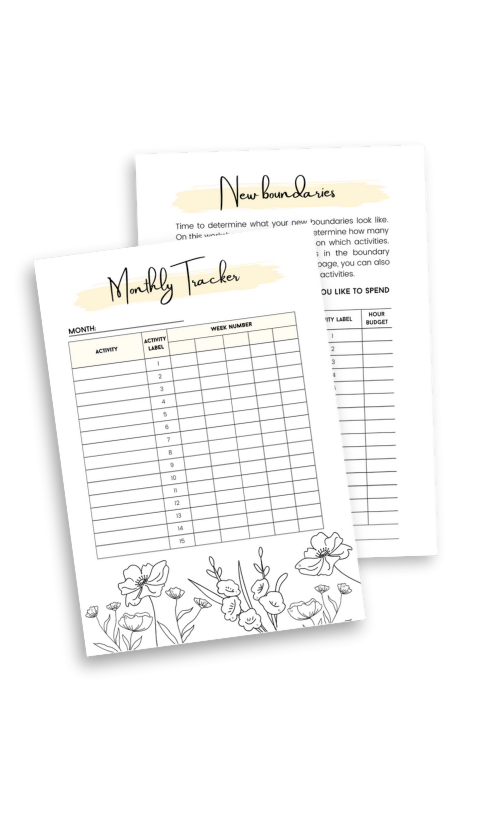Are you highly sensitive and/or empathic and struggling with negative self-talk? Fight it once and for all with this effective method!
Estimated reading time: 7 minutes
Do you talk negatively to yourself on a daily basis?
Are your insecure thoughts taking control over your life and knocking you down?
Do you sometimes wish that you could shut off your mind and find some peace from your anxiety?
Good news! There are ways to re-program your mindset. In this blog, I explain how you can tackle negative self-talk once and for all. With the effective method discussed in this blog, you will set your first steps towards a happier and more peaceful mind.
What Is Negative Self-talk And Where Does It Origin From?
Before diving into how to stop negative self-talk, let’s look at what negative self-talk is defined as by psychologists. Psychology Today defines self-talk as the inner voice, which basically runs on autopilot all day long, providing you with monologues. These monologues can be both positive and negative.
Negative self-talk occurs within all of us, but more frequently within people with depression and anxiety. Within them, the inner dialogue becomes self-destructive and dysfunctional, to a degree where the monologue is extremely critical and attacking.
As highly sensitive people and empaths are prone to experience anxiety, negative self-talk often is a challenge they have to deal with, too.
Awareness Is The Key To Change
By becoming aware of your inner voices and the effect they have on your emotions and daily life, you can start making the necessary changes to your mindset. For this you should know more about schema therapy and schema modes.
The different voices within you, are called schema modes. These schema modes are the emotional states and coping mechanisms we experience throughout the day. Usually, these are triggered by certain situations that we are more sensitive towards.
Throughout the entire day, some of our schema modes are inactive, while others have been activated through relatable life situations and occupy our mood and behavior.
In psychology, there have been identified 10 different schema modes. You can find a complete list of them – including descriptions of each mode – here.
Negative Self-talk Exercise: Who Sits In The Front Seat Of Your bus?
Now that you know the theory behind inner monologue, it is time to identify which thoughts are predominant in your mind. Afterwards, you can relate them to the different schema modes. By being aware of your schema mode, you can start taking directed action towards a healthier mindset.
In order to identify your thoughts, I’d like to share an amazing exercise with you, that I did with my life coach, when I first analyzed my inner voices.
This exercise enables you to visualize your inner monologue by placing your thoughts (passengers) in a bus.
You are the bus driver and all these passengers are telling you where to go. However, you hear the passengers in the front more clearly than those in the back.
It works the same with your thoughts. Some are louder in your mind than others. Therefore, it is good to become aware of which voices are your front seat-passengers at the moment and which voices are placed all the way in the back of ‘your bus’. Let’s dive in!
What You’ll Need:
For this exercise, you need the following items:
- A big paper with a bus drawn on it. Feel free to download this drawing and print it out.
- Post-its
- Markers
Step 1: Pick A Situation
The first thing you need to do, is to pick a situation in your life, where you often experience negative self-talk. Make it specific, so that the following steps become easier.
I, for example, picked the following situation: Oftentimes, I am very insecure about my business and entrepreneurial skills. In those moments, negative self-talk takes control within me and I feel more paralyzed to undertake action. I formulated the following situation for myself:
“How do I feel in the moments, where I am working on my business?”
As you can see, I picked a specific situation in life and used it as a base for the rest of the exercise. Go ahead and think of a scenario now, where your negative self-talk is predominant.
Step 2: Write Down All Your Thoughts
Now that you have your situation clear, it is time to write down all thoughts, that usually pop up in your mind during this situation. These can be both positive and negative thoughts. Nothing is wrong and all answers are good, remember that. It’s your mind we’re talking about!
So, take your time and put each thought on your post-it.
For my situation, some common thoughts where:
- Not good enough;
- Have to be succesful;
- Am going to fail;
- I feel inspired inspired.
In total, I had approximately 31 different thoughts that I had to place in my bus, just to give you an idea of how far you can go with this.
Let’s get started. Write down all your thoughts. Both positive thoughts and those that pop up in your mind when you are struggling from negative self-talk.
Step 3: Give Your Thoughts An Archetype
Now that you have all your post-its with your thoughts in front of you, it is time to attach an archetype to them. At the bottom of this article, you can find a complete list of 300 archetypes to choose from.
Here’s how I archetyped some of my thoughts:
- Not good enough -> Bully
- Have to be succesful; -> Nerd
- Am going to fail; -> Loser
- I feel inspired. -> Idealist
Once you named all your thoughts, you might see that some archetypes show themselves more often than others.
Step 4: Place Your Current Thoughts In Your Bus
Now that you have all your thoughts in front of you, it is time to place them in the bus. Think of your situation and place the loudest thoughts in front of the bus. The most silent ones go all the way in the back.
Once you have placed all your thoughts, look at your bus. What do you recognize? Which thoughts are the most loud at the moment? Take a picture of your bus as it is right now.
Warning; this can be very confronting. When I did this, I was truly shocked by how much negative self-talk is taking over my mind and it was quite emotional for me. Therefore, I recommend you, to do this exercise at a moment, where you have time to let your emotions flow freely without judgement from others.

Step 5: Time To Kick Out Some Passengers!
Now that you have your bus in front of you, it is time to visualize your ideal situation.
Which passengers do you want where? Who do you not want in your bus at all? Which ones are allowed to be there, but all the way in the back?
When I did this exercise, I decided to kick out some really self-destructive thoughts. However, I kept some ‘negative’ ones, which in some way still are useful for my professional growth, all the way in the back of the bus. Initially, these thoughts were sitting in my front seats.
Moreover, I placed the encouraging thoughts in my front seat.
After this round, you will notice that your bus looks completely different. Take a picture of it again.
I Am Finished With This Exercise, Now What?
Now that you have confronted your mindset with your two busses, you can start to undertake action to re-program your inner monologue.
Look at all your thoughts and try to relate them to one of these 10 schema modes (which I talked about earlier in this article). By being able to place them within these modes, you will know, what schema modes are more common within you. Once you know that, you can continue your personal growth journey and eliminate negative self-talk, by finding techniques to tackle your most predominant schema mode(s). Also, you will know which schema modes require more attention.
Every now and then, look at your ideal bus and analyze how far you have come. If you do this on a structural basis and become more aware of the voices within you once they occur, you will soon notice a change in mindset. This will help you to truly thrive in life. Good luck with waving negative self-talk goodbye once and for all!
Once you have become truly aware of your inner critic, you can silence this voice with these 5 powerful methods.






